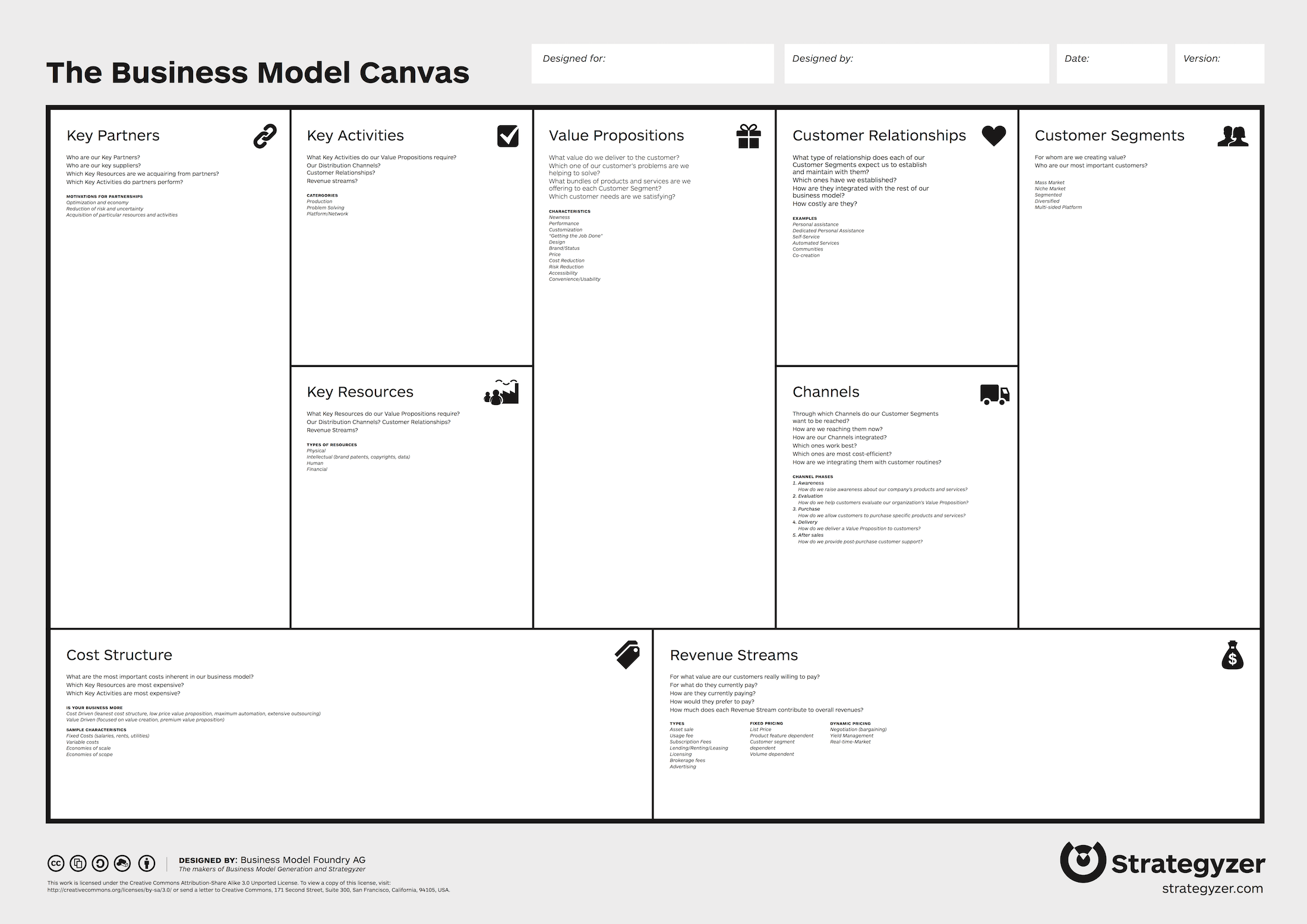Building a product that nobody wants is one of the leading causes of failure for startups. Fortunately, there are some straightforward strategies that you can use to validate your startup ideas before investing time and energy into development. By doing so, you can dramatically improve your chances of success by ensuring you achieve product-market fit.
Let's take a look at how to validate your startup idea and increase the odds of success.
The failure to validate a startup idea is a leading cause of failure—here's how to increase your odds of success. Share on XStart with the Basics
The Business Model Canvas provides an excellent starting point for any startup. Rather than writing a formal business plan, the canvas helps you think through customer segments, revenue streams, cost structure, partnerships, and your value proposition. These are the fundamental building blocks of every successful startup.

Business Model Canvas - Source: Strategyzer
Some key questions to think about include:
- Who is your target customer? Customer personas are helpful for defining demographics, geography, personality, financial condition, and other defining characteristics of your target market.
- What problem are you solving for them? Start by defining and understanding the problem rather than beginning with the solution. Then, explore the alternatives that customers might use to solve the problem.
- How does your product solve the problem? Determine how customers currently solve the problem. Then, compare your product to the competition and articulate how it addresses customer problems in a cheaper or better way.
- What are the product's key features? Define how your product addresses the customer’s problems in quantitative terms and set the stage for the minimum viable product’s (MVP) initial feature set.
When going through these exercises, don't get bogged down in the details. The answers to these questions are educated guesses about your target market that require validation. Validating these ideas by making phone calls or arranging meetings with your target market is a much better use of time than endlessly debating them internally.
Test Your Assumptions
The Business Model Canvas brings up critical assumptions about your target market. For example, you're assuming that customers value key features or that you'll be able to reach them through specific distribution channels. The best way to validate a startup idea is to systematically test each assumption to ensure that you're on the right track.
The best way to test assumptions is to talk to potential customers. And Robert Fitzpatrick's The Mom Test is one of the best resources for effectively conducting these interviews. Among other things, the book covers how to frame the conversation, ask good questions, deflect fluff, take good notes, and press for a commitment and next steps.
Some of the most important tips include:
- Talk about their life instead of your idea. Discuss the customer's life, workflows, and problems before bringing up your product. After all, most will simply lie to make you feel good about your idea.
- Ask about specifics in the past instead of generics. Don’t ask whether a customer would use a certain product or feature. Instead, ask how they went about solving the problem in the past to identify pain points.
- Talk less and listen more. Get the customer talking about their problems and avoid interjections that derail the conversation. Use shorthand to quickly document what they’re saying, as well as their moods or other details.
There are many places to find potential customers. For instance, you may email a handful of prospects on LinkedIn with a simple message requesting a 15-minute phone call with a few suggested times. You can also talk to potential customers at conferences, coffee shops, or any number of physical locations.
Launch Your MVP
The final step is building and launching a minimum viable product, or MVP. Rather than building out a complete product, start with an MVP with enough features to attract early-adopter customers. The goal is to begin collecting feedback as quickly as possible to iterate and improve the product and minimize waste from unnecessary features.
When thinking about an MVP, people tend to focus too heavily on the "minimum" part. However, the MVP also needs to be "viable" in the sense that it solves the customer problem. The best MVPs are highly functional and beautifully-designed products with minimal features while manually doing tasks that would be time-consuming to automate.

Airbnb's minimalistic MVP. Source: Andrej Gajdos
For example, Airbnb's founders famously started by renting their apartment to validate their idea. The minimalistic website had a few photos and other details about their property. After securing paying customers, they had the confidence to build the product further and invest in their full-scale platform vision.
After you've started to see product-market fit for an initial feature set, start conducting the same customer interviews to validate future features and iteratively deploy them. If you're outsourcing development, be sure to hire a firm that takes a similar approach to development, such as an Agile development shop familiar with customer development.
The Bottom Line
Product-market fit is essential for any startup to succeed. Using the Business Model Canvas and The Mom Test, you can identify a list of assumptions and validate them through effective customer conversations. It's the easiest way to ensure that you're not spending a lot of time and money on a problem that doesn't exist.
If you need help with customer development or you're ready to take the next steps, Sharkbyte specializes in helping build everything from MVPs to full-fledged software platforms. Contact us for a free consultation.



